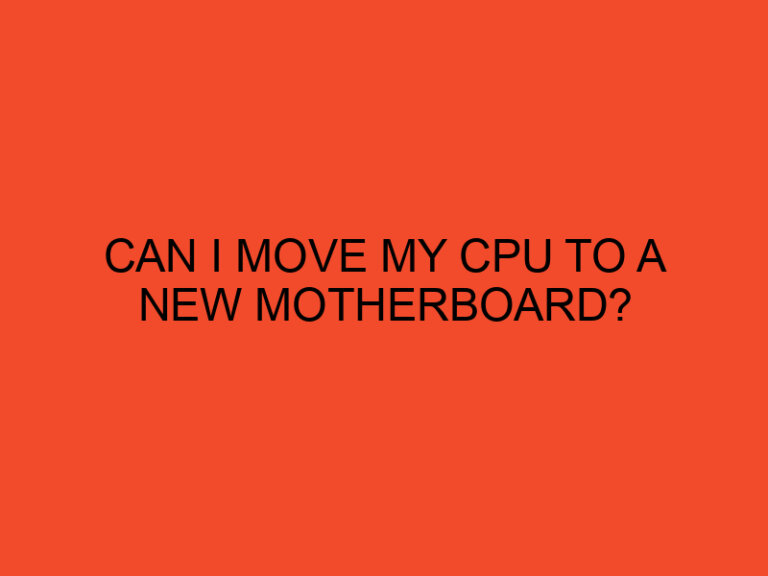In the world of technology, processors are the brains of the computer, and they determine how fast and efficient a computer can run. One of the latest trends in the market is the use of multi-core processors. A deca-core processor is a processor that has ten independent cores to perform calculations simultaneously. This article will explore the meaning of a deca-core processor and its impact on computing devices.
Table of Contents
What is a Processor?
Before we dive into the specifics of a deca-core processor, it is essential to understand what a processor is. A processor, also known as a Central Processing Unit (CPU), is an electronic circuit that executes instructions given by computer programs. It performs the basic arithmetic, logic, and input/output operations of a computer. In simpler terms, it is the brain of a computer.
What is a Deca-Core Processor?
A deca-core processor, also known as a 10-core processor, is a type of multi-core processor that has ten independent cores. Each core is capable of performing tasks separately, and the ten cores work together to perform tasks more efficiently. With more cores, the processor can handle more tasks at once, making the device run faster and more smoothly.
How Does a Deca-Core Processor Work?
A deca-core processor works by dividing tasks into smaller parts and assigning them to different cores. For example, if you are running multiple applications simultaneously, the processor assigns each application to different cores. With each core performing a specific task, the device can handle multiple applications simultaneously without slowing down or freezing.
Moreover, deca-core processors use Hyper-Threading technology, which allows each core to perform two threads simultaneously. This feature doubles the number of threads that the processor can handle, further increasing the device’s efficiency.
What are the Benefits of a Deca-Core Processor?
The primary benefit of a deca-core processor is its speed and efficiency. With ten cores, the processor can handle multiple tasks simultaneously without slowing down or freezing. This feature is particularly useful for gamers, video editors, and graphic designers who require a powerful computer that can handle multiple applications simultaneously.
Moreover, deca-core processors consume less power than older processors, making them more energy-efficient. This feature is useful for devices that run on battery power, such as laptops and smartphones.
What Devices Use Deca-Core Processors?
Deca-core processors are commonly used in high-end smartphones and gaming computers. Some of the popular smartphones that use deca-core processors are the Samsung Galaxy S21, OnePlus 9 Pro, and Xiaomi Mi 10. These smartphones are known for their fast and smooth performance.
Moreover, deca-core processors are commonly used in gaming computers, such as Alienware, MSI, and ASUS. These gaming computers require a powerful processor to handle high-quality graphics and multiple applications simultaneously.
Are There Any Downsides to Using a Deca-Core Processor?
The primary downside of using a deca-core processor is its cost. Deca-core processors are more expensive than dual-core or quad-core processors, making them less accessible to budget-conscious users. Moreover, not all applications are optimized to take advantage of the additional cores, making the device’s performance similar to a quad-core processor.
Conclusion
In conclusion, a deca-core processor is a type of multi-core processor that has ten independent cores. It provides faster and more efficient performance, making it ideal for high-end smartphones and gaming computers. However, it is more expensive than older processors and may not be accessible to budget-conscious users. Overall, the use of deca-core processors is an exciting development in the world of technology and shows how far computing has come.
FAQs
1. What is the difference between a deca-core processor and other multi-core processors?
The primary difference between a deca-core processor and other multi-core processors is the number of cores. A deca-core processor has ten independent cores, while a quad-core processor has four independent cores. With more cores, the deca-core processor can handle more tasks simultaneously, making it more efficient.
2. How does a deca-core processor affect battery life?
Deca-core processors consume less power than older processors, making them more energy-efficient. This feature is particularly useful for devices that run on battery power, such as laptops and smartphones. However, using multiple applications simultaneously can still drain the battery quickly.
3. What types of applications are optimized for deca-core processors?
Applications such as video editing software, 3D modeling software, and gaming software are optimized for deca-core processors. These applications require a powerful processor to handle multiple tasks simultaneously.
4. Is it worth upgrading to a deca-core processor?
It depends on your needs. If you are a gamer, video editor, or graphic designer, upgrading to a deca-core processor may improve your device’s performance. However, if you only use your device for basic tasks such as browsing the internet and sending emails, a deca-core processor may not be necessary.
5. Can a deca-core processor overheat?
Like all processors, a deca-core processor can overheat if it is not properly cooled. It is essential to ensure that your device has adequate cooling, such as fans or heat sinks, to prevent overheating. Overheating can cause damage to the processor and reduce the device’s performance.





